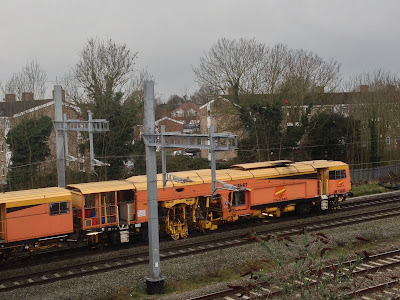I went for walk this Sunday, so I went to do the other side of the Grand Canal.
This part of the canal heads out of town.
End this is where a lot of the holiday canal boats are stored.
On my way home I heard something strange, it was a machinery sound that was rhythm, so I went to investigate. I found this machine on the way home, It levels tracks. This is for therains when they are at 80Mph and still be run smooth. Basically big Spikes are pushed into the Stones, and lift the rails and few millimeters, and leveled by laser. big pressures obviously in the running of this machine.



